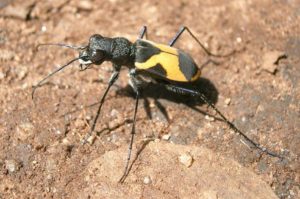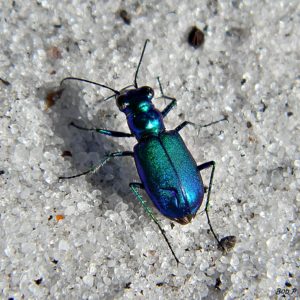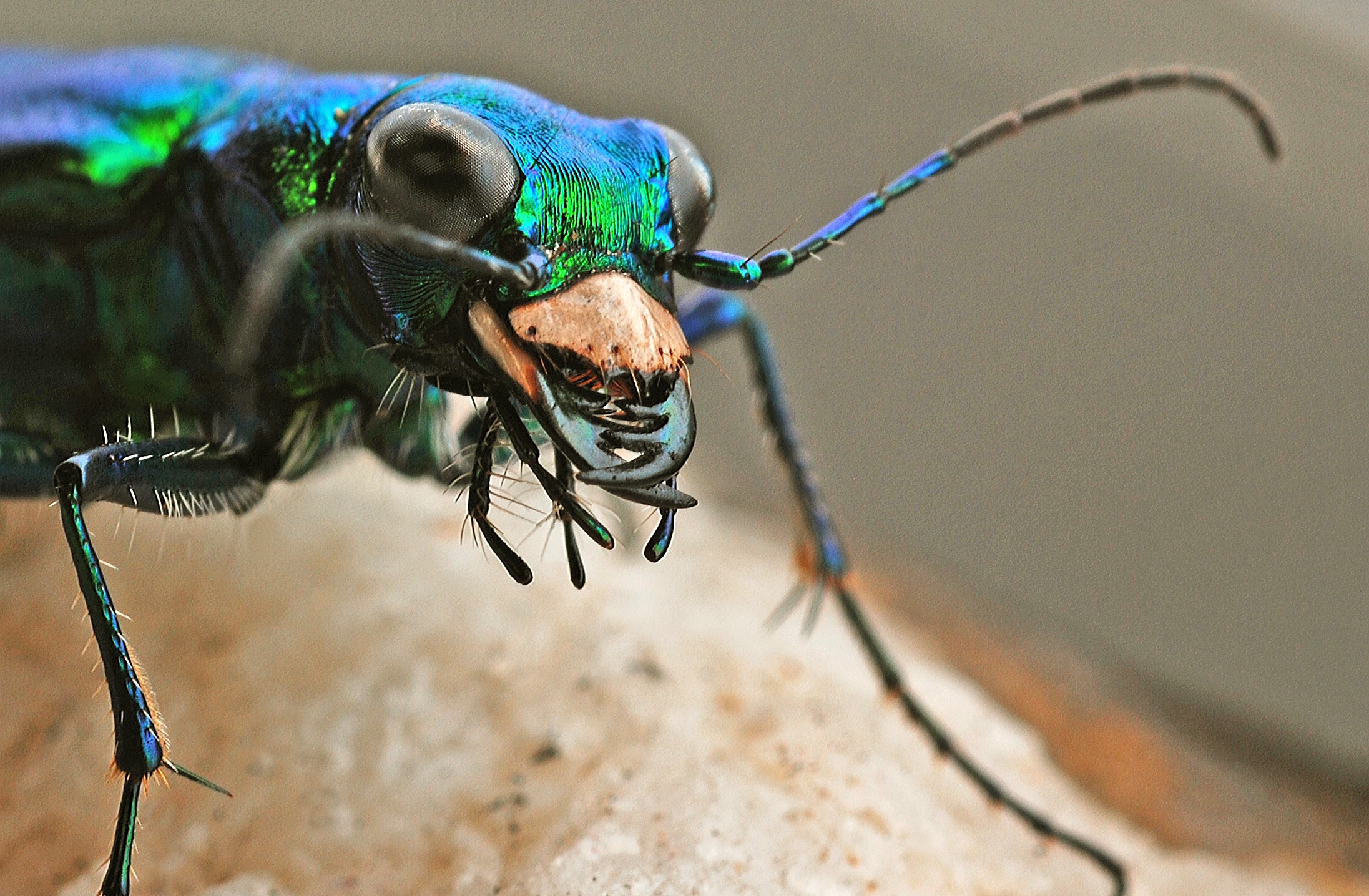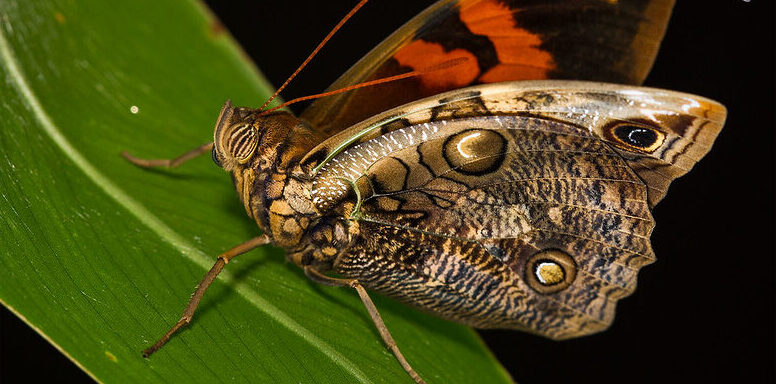Summer is well on its way and the beautiful weather has everyone wanting to stretch their legs. And as a runner and insect enthusiast, I wanted to share some fun facts about special insect runners, the tiger beetles.

Tiger beetles are extraordinary predators and masterfully adapted to their environment. Their common name refers to violence with which they tear prey apart while eating. This aggressive behavior is apparent in all life stages of the beetle. Larval tiger beetles burrow vertical pits in soft sand to await their next meal. When an unlucky insect wanders by, powerful mandibles explode from beneath the ground, seizing their victim before dragging them into the pit to be torn apart. A pair of hind-quarter spines helps keep the larva anchored, preventing desperate prey wriggling free or predators from snatching the larva out of the hole (1).

Adult tiger beetles retain the violent eating habits of their younger selves, but are much more mobile. In fact, one Australian species (Cicindela hudsoni) holds the record for one of the fastest running speeds in all the animal kingdom, relative to body size. While 5.6 miles per hour may seem slow, a human athlete running the same relative speed would be blindingly quick at 720 mph (2)!

Blinding speed plays a large role in the way tiger beetles hunt. With their large compound eyes, tiger beetles easily spot any scurrying motions that might led them to a meal. But as the chase ensues, tiger beetles often stop to reorient themselves. Curiously, tiger beetles run so fast, they effectively blind themselves! As they run at full speed, not enough light particles (photons) are received by their eyes. This lack of light degrades a beetle’s sight over time. So frequent stops mid-pursuit are necessary for successful hunting (2). Even with stopping, tiger beetles still easily outpace their running prey.

While the beetles may have excellent sight for prey, they rely on the sensation of their antennae for avoiding obstacles (3). Many insects swivel their antennae around to get extra sensory data for navigating their environments. But tiger beetles rigidly hold their antennae forward and just off the ground, allowing them to sense and react to any obstruction while keeping their eyes on their quarry. In a set of experiments done by Cornell researchers, beetles were able to use their antennae to maneuver over obstacles, even when their eyes were covered. However, removing the antennae of unpainted beetles caused them to crash into every hurdle. This experiment revealed that tiger beetles have evolved a complex mechanical way to sense their environment to complement their stop-and-start hunting. This research may have implications for self-driving vehicles, as forward-facing antennae provide much faster and reliable information about road conditions than cameras (2).

Whether causing dread in their prey or inspiring engineers, tiger beetles are a marvel of the natural world. In fact, scientists can even use them to determine the health of a particular ecosystem. Tiger beetles are found throughout the world and are sensitive to dynamic patterns in land use, pesticide application and climate change. By making surveys of local tiger beetle populations, biologists can determine how well an ecosystem is supporting other animals and plants. When researchers were asked to help draw boundaries lines for a national park in Madagascar, plans were drawn up to maximize the protection of tiger beetles. By ensuring the survival of indicator species like tiger beetles, researchers could be confident that other species, like frogs and orchids, would be protected (4). So the next time you’re out in nature, keep an eye out for these marvelous bio-indicators!
References
- Elzinga, R. J. 2004. Fundamentals of Entomology. 6th ed. Pearson/Prentice Hall, Upper Saddle River, N.J
- Zurek D.B., Gilbert, C. (2014). Static antennae act as locomotory guides that compensate for visual motion blur in a diurnal, keen-eyed predator. Proc. R. Soc. B 281: 20133072. http://dx.doi.org/10.1098/rspb.2013.3072
- Zurek, D.B., Perkins, M.Q., and Gilbert, C. (2014). Dynamic visual cues induce jaw opening and closing by tiger beetles during pursuit of prey. Biology Letters 10, 20140760.
- Elser, T. (2009). Chasing Tiny Tigers. ASU -Ask A Biologist. Retrieved June 8, 2018 from https://askabiologist.asu.edu/explore/chasing-tiny-tigers




